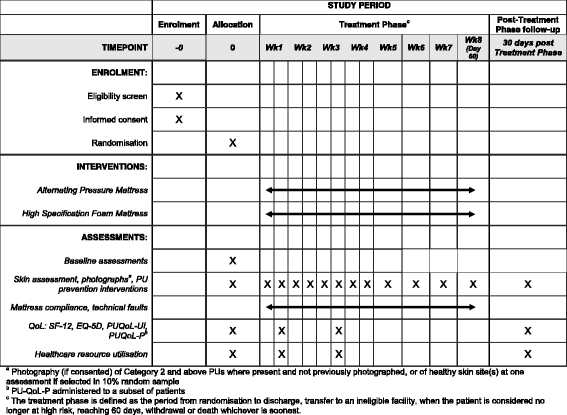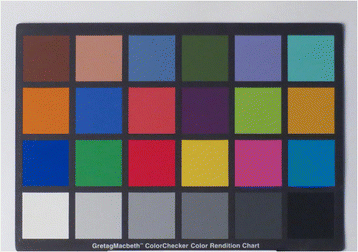Pressure RElieving Support SUrfaces: a Randomised Evaluation 2 (PRESSURE 2) photographic validation sub-study: study protocol for a randomised controlled trial
- PMID: 28320482
- PMCID: PMC5360042
- DOI: 10.1186/s13063-017-1851-5
Pressure RElieving Support SUrfaces: a Randomised Evaluation 2 (PRESSURE 2) photographic validation sub-study: study protocol for a randomised controlled trial
Abstract
Background: PRESSURE 2 is a randomised evaluation of the clinical and cost effectiveness of two types of pressure relieving mattress for the prevention of pressure ulcers. The primary endpoint is the time to development of a Category ≥2 pressure ulcer. The current 'gold standard' for the identification of a Category ≥2 pressure ulcer is expert clinical assessment. Due to the appearance of the bed, it is not possible to achieve blinding of the endpoint. This therefore poses a risk to the internal validity of the study. A possible approach is to use photographs of skin sites, with central blinded review. However, there are practical and scientific concerns including whether patients would agree to photographs; the burden of data collection; the quality of photographs; the completeness of data; and how the use of photographs compares with the current 'gold standard'. This validation sub-study aims to assess and quantify potential bias in the reporting of the trial endpoint.
Methods/design: Patients will be specifically asked to consent to photographs being taken of their skin sites. Photographs will be taken at first observation or when patients develop a new Category ≥2 pressure ulcer (to assess over-reporting). A 10% random sample of patients will be identified for additional photographs of two skin sites (one torso and one limb) with and without a pressure ulcer (if present) by an independent assessor (to assess the potential for under-reporting). Staff will be trained to take photographs using a standardised camera and photographic technique. A 'grey scale' will be included in the photo to correct white balance. Photographs will be securely transferred for central review. Photographs will have white balance corrected, and the computer monitor will be calibrated prior to review. Analysis will include assessment of under- and over-reporting, acceptability of photography to patients, secure transfer of data, quality of and confidence in blinded photograph review and sensitivity analysis using photograph assessment of primary outcome.
Discussion: This study will use photographs to contribute to the primary outcome of the trial. It will inform our understanding of the acceptability of photography for prevention trials and the possibility of other uses of photographic data in clinical work and research.
Trial registration: ISRCTN, ISRCTN01151335 . Registered on 14 May 2013.
Keywords: Blinded outcome assessment; Pressure ulcer; Randomised controlled trial; Wound photography.
Figures
References
-
- Haesler EE. National Pressure Ulcer Advisory Panel, European Pressure Ulcer Advisory Panel and Pan Pacific Pressure Injury Alliance. Prevention and treatment of pressure ulcers: quick reference guide. Perth: Cambridge Media; 2014.
Publication types
MeSH terms
Associated data
Grants and funding
LinkOut - more resources
Full Text Sources
Other Literature Sources
Medical






